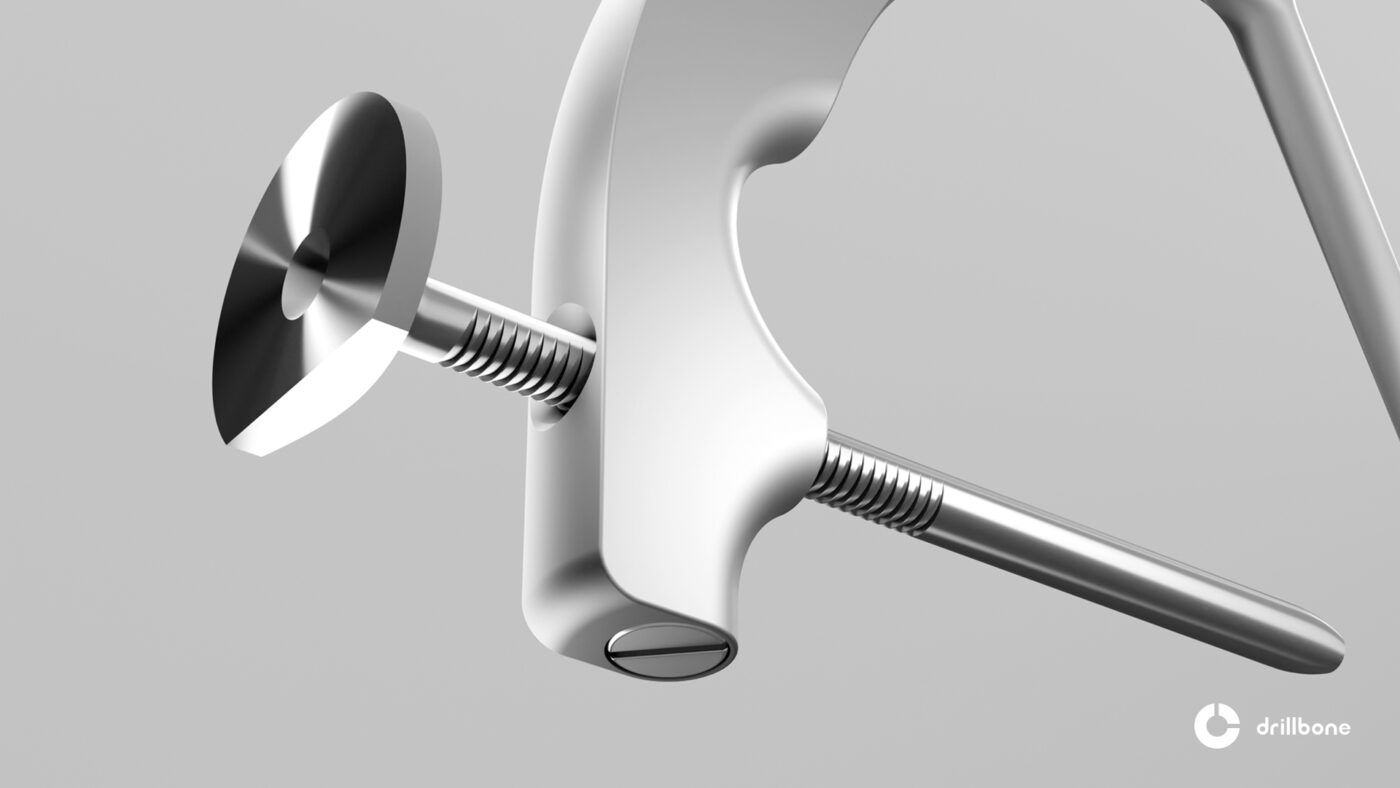Products
Drillbone Tunneler
Less implants, pain, costs – MORE VALUE
Number of surgeries:
405
VAS IMPROVEMENT: 6,10 → 1,23 (click to view a chart)
ASES IMPROVEMENT: 46,3 → 85,9 (click to view a chart)
The Drillbone Tunneler is a guide designed for transosseous rotator cuff repair. We launched this medical device onto the market in 2021.
From the 1930s and until well into the 1990s, transosseous rotator cuff repair was the gold standard for the treatment of rotator cuff tears. Throughout this period the operation was performed in practically the same way as when first introduced by E. A. Codman in 1911. After the transition to arthroscopy, transosseous repair had partially fallen into disuse. Arthroscopic or mini-open repair with suture anchors had mitigated the occurrence of postoperative stiffness and deltoid insufficiency but unfortunately did not yield any major improvement in clinical results.
Based on biomechanical studies and the evaluation of results, the suture anchor repair technique is gradually evolving. The aim is to replicate the original successful transosseous technique as much as possible. The anchors, however, remain the basic barrier. They are foreign material, and while they perform well in biomechanical studies, they do not allow for full biological healing.
The arthroscopic transosseous technique seems a promising solution. It combines the benefits of a simple yet efficient method of fixation of the tendon to the bone with the minimal invasiveness of arthroscopy. This requires an instrument for the arthroscopic preparation of tunnels. There have been several such instruments over the past 30 years. The most frequently used include the American ArthroTunneler and TransOs, as well as the TaylorStitcher from Italy.
The results published so far demonstrate that transosseous rotator cuff repair could be the technique of the future. It achieves a higher footprint coverage and better pressure distribution across the area. The micro-motion on the tendon-bone interface is smaller. Blood circulation in the healing site is much better, and healing is thus far more natural. Further studies have shown that postoperative pain recedes earlier. There are none of the potential complications of implants. The terrain is more favorable if revision surgery is required. Cost analyses confirm significant savings in rotator cuff tears treated by the transosseous technique.
With our Drillbone Tunneler, transosseous rotator cuff repair is a more straightforward operation. We have built on the work of those who refused to give up and continued developing these instruments for the past 30 years. The Drillbone Tunneler is a tool based on an entirely new principle and you will enjoy using it. We want to continue to contribute to the evolution of rotator cuff repair. Transosseous rotator cuff repair meets the principles of value-based care, delivering value to patients, surgeons, and medical care payers.











